Ecodesign requirements for (central) air heating products, cooling products and high temperature (process) chillers were adopted in 2016 (Regulation 2016/2281). These cover the following products:
AIR CONDITIONERS
Air Conditioners covered are larger ones, not covered by Commission Regulation (EU) 206/2012, that have a rated cooling capacity > 12 kW. They are often reversible, meaning that they have both a cooling and a heating function and use air as the medium to cool or heat the space.
AIR HEATERS
Air Heaters covered are central heating systems using air as the medium to heat the space-working on liquid fuel or gas (AHF) or on electricity (AHE). These attributes distinguish them from Local Space Heaters, Solid Fuel Boilersand Central Heating Boilers.
CHILLERS
Chillers use a liquid (water or brine) as the cooling medium, which distinguishes them from the Air Conditioners. They are used in systems that cool spaces to provide thermal comfort to human beings.
HIGH-TEMPERATURE PROCESS CHILLERS
High-Temperature Process Chillers are used to cool spaces, but for reasons other than the comfort of human beings, e.g. to cool spaces with computers in data centres.
Source: estimations from the Ecodesign Impact Accounting Overview Report 2024
Scope
The following table shows some examples of products in scope and out of scope in the Ecodesign Regulation:
| In Scope | Out of Scope |
|---|---|
|
|
Check the complete list in the Ecodesign Regulation and Energy Labelling Regulation.
Ecodesign Requirements
Ecodesign requirements for air heating and cooling products, high temperature process chillers and fan coils are mandatory for all manufacturers and suppliers wishing to sell their products in the EU. Depending on the product, they cover:
- information requirements
- energy efficiency
- the emission of nitrogen oxides
The requirements apply to air heating products with a rated heating capacity of up to 1 MW, cooling products and high temperature process chillers with a rated cooling capacity of up to 2 MW, and fan coil units.
Facts & Figures
This graphic shows the estimated sales, stock, energy consumption (primary, electric or fuel), greenhouse gas emissions, consumer expenses and business revenues for years 2010 and 2030. The estimated values inside the graph bars are those from the EIA ECO-scenario, they include the effects of Ecodesign and Energy Labelling measures.
The difference with the business as usual (BAU) scenario without these estimated measures is shown next to the graph bar. These figures indicate the estimated savings obtained due to the measures.
Product: Central Air Heating Measures: Regulation (EU) 2016/2281 |
|---|
| The striped lines in the charts show the 'Effect of the Regulations' |
SALES (x1000 units) 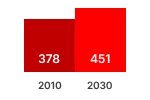 | STOCK (x1000 units) 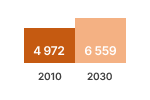 | Primary Energy (TWh/a) 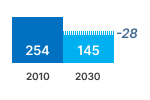 |
GHG-EMISSION 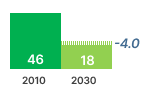 | CONSUMER EXPENSES 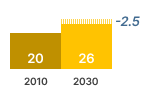 | REVENUES 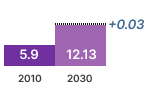 |
Product: Central Air Cooling Measures: Regulation (EU) 2016/2281 |
|---|
| The striped lines in the charts show the 'Effect of the Regulations' |
SALES (x1000 units) 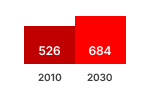 | STOCK (x1000 units) 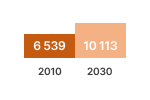 | Primary Energy (TWh/a) 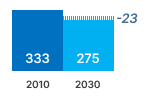 |
GHG-EMISSION 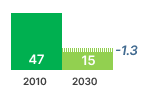 | CONSUMER EXPENSES 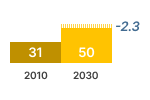 | REVENUES  |
Source: estimations from the Ecodesign Impact Accounting Overview Report 2024
In 2020, 10 million central air heating and cooling units were in use in the EU27, of which 65% air conditioners, 19% comfort chillers, 4% high-temperature process chillers and 12% air heaters.
In 2020, a total of 798 TWh/a of cooling was provided by process chillers (75%), comfort chillers (15%) and central air conditioners (10%).
This is 91% of the total cooling demand in the Ecodesign Impact Accounting (the remainder are room air conditioners).
A total of 211 TWh/a of heating was provided by central air conditioners (64%) and air heaters (36%). This is 9% of the total EU heating demand (2360 TWh).
Stock and load weighted average efficiencies:
Comfort chillers: 446% in 2030 (+22%points; +5.2% compared to no measures).
Process chillers: 687% in 2030 (+58%points; +9.2% compared to no measures).
Central air conditioners for cooling: 456% in 2030 (+42%points; +10.1% compared to no measures).
Central air conditioners for heating: 179% in 2030 (+12%points; +7.2% compared to no measures).
Air heaters: 84% in 2030 (+12%points; +16.6% compared to no measures).
The regulations are projected to save 18.3 TWh of electricity in 2030 (-9% compared to no measures) and 15.8 TWh of fuel (-19%).
The combined savings of 34 TWh in 2030 are 0.31% of the total EU27 final energy consumption in 2021 (10922 TWh), and close to the consumption of Estonia (32 TWh in 2021).
Due to Ecodesign measures, EU27 users are expected to save € 4.8 billion on central air heating and cooling in 2030 (-7%).
Expected Savings
AIR HEATING, ENERGY SAVINGS
Without measures, AH and reversible AC would be expected to consume 182 TWh/a primary energy in 2030. Due to the measures this can be reduced to 153 TWh/a (-29 TWh, -16%, of which 38% due to increased use of Ventilation Units). The largest savings (16.7 TWh or 58%) are obtained on the 1 mln installed fuel-fired air heaters (AHF), due to an increase in efficiency from 66% in 2015 to 82% in 2030, and due to heat load reduction by Ventilation Units.
Split heat pumps (AC splits rev) have the largest stock (3 mln units, 46% of total) but consume only 21% of the total energy of air heaters. Their contribution to the primary energy savings is 4.8 TWh/a (17%) in 2030. Although rooftop heat pumps (AC rooftop rev) show a large efficiency improvement (122% in 2020 to 130% in 2030), their contribution to energy savings is modest (1.9 TWh/a or 7%), because the stock is much lower (162 thousand units or 2.5% of the stock in 2030).
Variable refrigerant flow systems (AC VRF rev) are the only air heating products with increasing stock (0.9 mln in 2015 to 2.2 mln in 2030). Their average efficiency will increase from 131% in 2015 to 144% in 2030, with a contribution of 4.1 TWh/a (15%) to the total primary energy savings in 2030.
EU27 Primary Energy Savings on Air Heaters and Reversible Air Conditioners
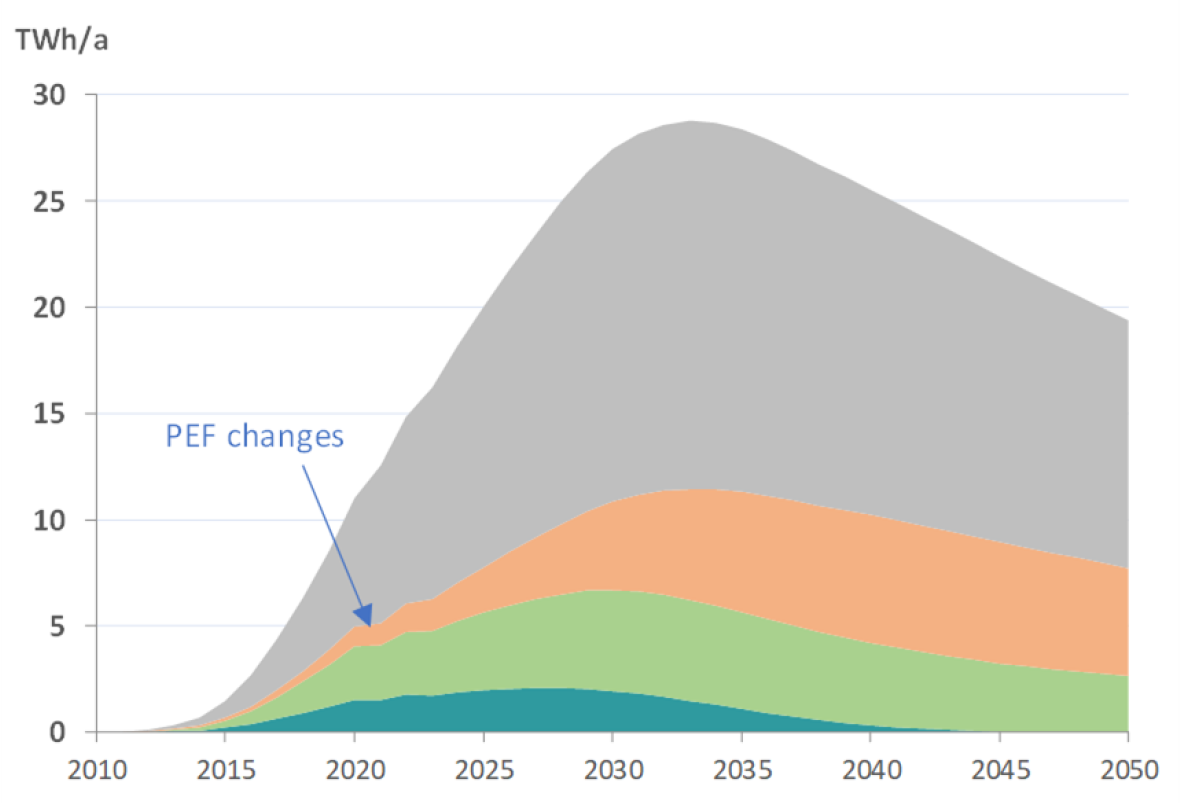

SPACE COOLING, ELECTRICITY CONSUMPTION AND SAVINGS
The 8.8 mln installed (central) cooling products covered by regulation 2016/2281 consumed 151 TWh/a of electricity in 2020. For comparison: the separately regulated 46 mln (smaller) Room Air Conditioners consumed 12 TWh/a.
Although there are relatively few HT-PCH (4% of stock), they have high cooling outputs (ranging from 865 to 6375 MWh/a/unit), and as a result consume 65% (99 TWh) of the total electricity. Chillers represent 22% of the stock, have medium cooling outputs (25 to 900 MWh/a/unit), and are responsible for 21% of total electricity use for space cooling. Air conditioners (excluding RAC) represent 74% of the stock but have relatively low cooling outputs (9 to 40 MWh/a/unit) and therefore use only 14% of the electricity.
The measures on cooling products are expected to save 12 TWh/a of electricity in 2030, corresponding to 23 TWh/a of primary energy for the generation and distribution of this electricity (at PEF=1.9). Most of these savings (73%) are obtained on high-temperature process chillers.
EU27 Total Electricity Consumption of Space Cooling Appliances in 2020

EU27 Electricity Savings for Air Cooling
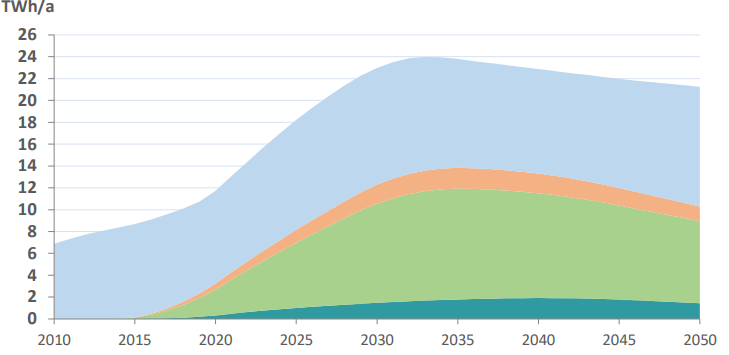

Source: estimations from the Ecodesign Impact Accounting Overview Report 2024

Policy
Ongoing legislative work
Please check the ongoing initiatives on the Have your say portal.
Regulation (EU) 2016/2281 of 30 November 2016 implementing Directive 2009/125/EC of the European Parliament and of the Council establishing a framework for the setting of Ecodesign requirements for energy-related products, with regard to Ecodesign requirements for air heating products, cooling products, high temperature process chillers and fan coil units (Text with EEA relevance)
Disclaimer: please pay attention to possible updates/changes as indicated in the Official Journal (green dot)
Documents
Preparatory study for cooling products – Final report
Preparatory study for air heating products – Final report
- 13 DECEMBER 2023
- 6 MARCH 2024
- 6 MARCH 2024

